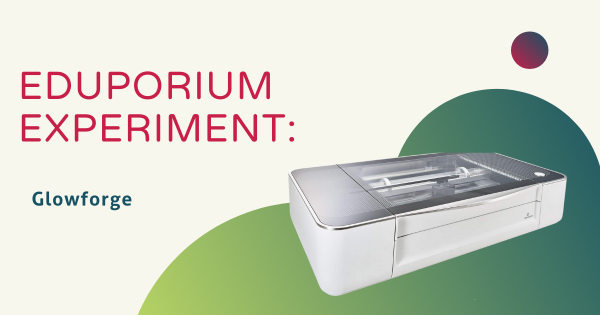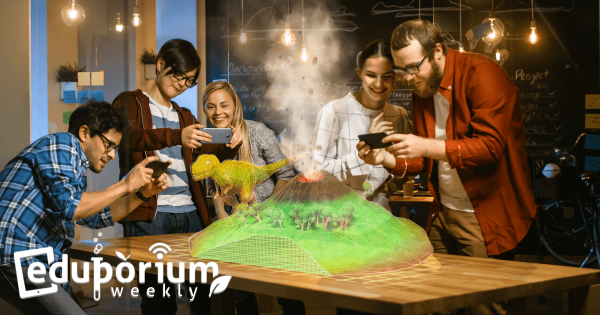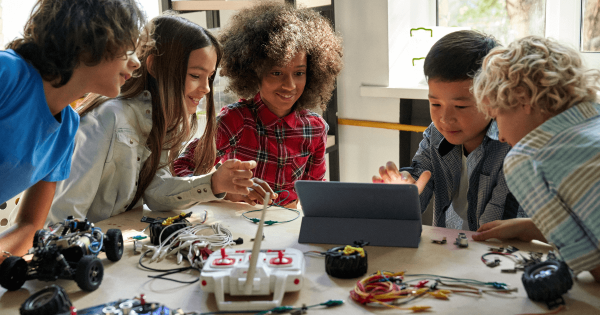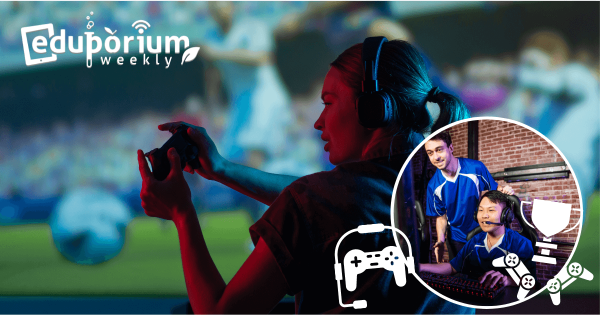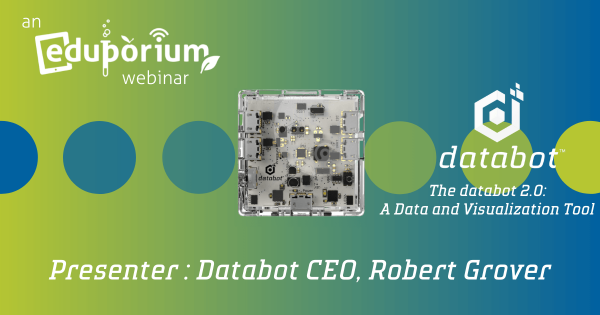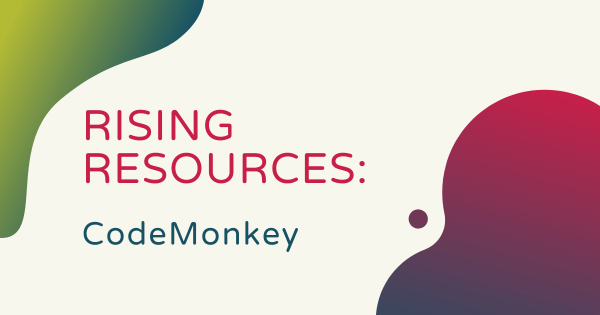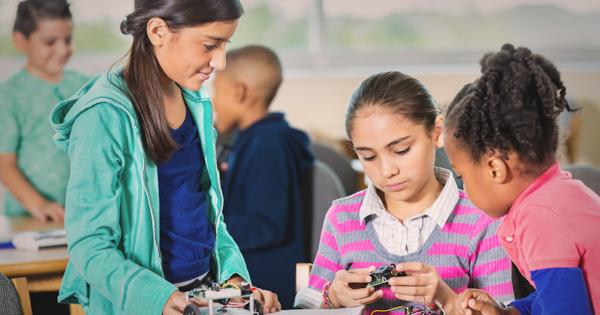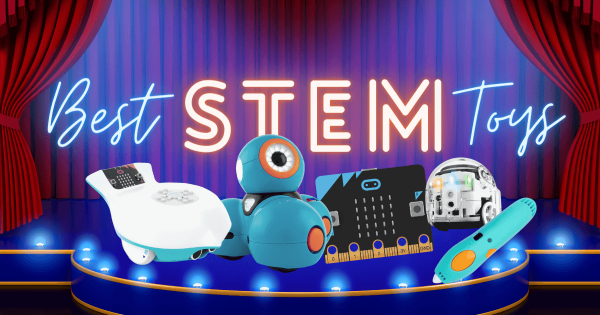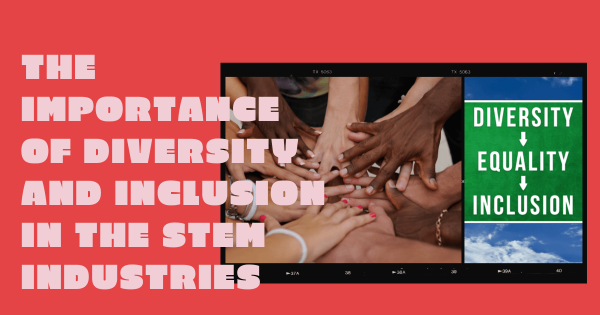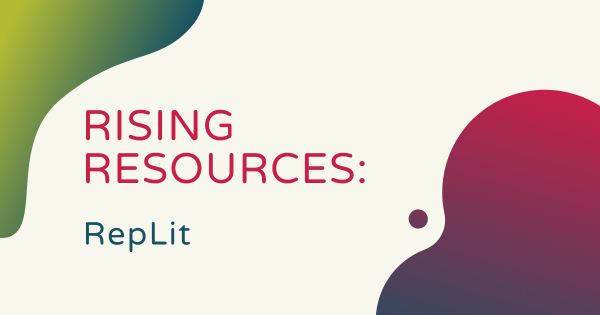Whether they prefer the Glowforge Pro or the Glowforge Plus laser printer, students can quickly translate digital designs into tangible inventions while bringing their ideas to life. They could print on paper, fabric, hardwood, tile, metal, glass, leather, plywood, cardboard, or even food using these unique machines and the large library of classroom-friendly Glowforge projects.
STEM
When it comes to STEM in 21st century teaching and learning, there are few limits to what students can accomplish. Besides helping boost their overall engagement and enjoyment levels in the here and now, access to STEM learning and opportunities to build real-world skills often significantly improve how students prepare for the future. Whether it's with introducing them to coding in the early grades, engineering in their middle years, or the benefits of more complex technologies, like virtual reality or artificial intelligence, in high school, STEM education is a crucial piece of student development. With such huge potential and importance, however, this instruction requires planning, guidance, and equipment. And, as the economy keeps trending toward STEM-dominated professions and opportunities, exposure to these areas is vital. Thankfully, there are few restrictions to leading effective STEM lessons.
Our mission is helping educators develop students who are truly Future Ready and helping them facilitate relevant learning is how. To that end, we offer a robust online store filled with the latest STEM solutions. But, beyond that, we love creating and sharing impactful content to help enhance how educators use these tools in instruction. In this section of our blog, you'll find countless posts on trending STEM topics, how-to articles, many recommendations for classroom solutions and projects, industry updates, connections between STEAM tools and the future, and a lot more. We are also extremely committed to closing certain gaps and increasing equity in STEM education. As such, a lot of this content contains context for advancing inclusive opportunities for all kids. We encourage you to search through the posts to find something relevant for you. And, if there's any topics we've missed, let us know.
-
Eduporium Weekly | Using Mixed Reality In Education
Though technologies like mixed reality, VR, and AR may initially have been for entertainment or gaming, it didn’t take long to realize that they can also impact education—especially by helping today’s teachers more effectively engage and excite students. So, this week, let’s explore the different forms of immersive technology and how they can help enhance STEM learning. -
SEL In The K-12 Classroom: How Maker Education Fits In
Social-emotional learning is a process—and it’s arguably one that students never truly complete. Educators can, however, always help kids strengthen key emotional competencies and hands-on experiences in their classroom can play a large role, especially when they take part in STEAM or MakerEd initiatives that help them connect to their projects on an emotional level. -
Eduporium Weekly | Creating An Esports STEM Curriculum
Besides opportunities to participate in something they are truly passionate about, kids can also learn more about things like how esports has become this popular and some of its potential benefits and drawbacks. Also, some of the cons of esports in schools might be fairly obvious but in connecting them to their own personal experiences, students can learn a lot. -
Webinar: STEM, CTE, And Data Capture With The databot 2.0
Among other updates to the databot 2.0, it has a more powerful processor, a drag-and-drop coding platform, and some new links to machine learning. Robert gave a super informative overview of the databot 2.0 and we could definitely feel that excitement from the educators in attendance—many of whom immediately saw educational value in this data collection tool. -
Rising Resources | Code In Any Context With CodeMonkey
CodeMonkey is a super dynamic platform for kids, parents, and educators who have any amount of prior programming experience to develop critical coding and STEM skills. With interactive games on a variety of relevant CS topics, a wealth of teaching resources, and its cool program-sharing social feature, CodeMonkey makes the perfect addition to any STEM classroom. -
Eduporium Weekly | Overcoming Challenges In STEM Education
Today’s educators, as we know, are facing plenty of challenges, including, believe it or not, grappling with how to expose students to STEM learning. STEM remains a huge part of the economy and, consequently, it is a large focus in many classrooms but that doesn’t always mean that it’s easy for educators to make it accessible, equitable, and effective for -
Best STEM Toys For Building Key Skills
While STEM learning wasn’t always top priority in the pandemic-disrupted years, some educators continued doing their best to provide students with these opportunities in different learning environments. And, in that time, we have seen how many top classroom EdTech tools also double as beneficial STEM toys for individual exploration. So, here are a few of our favorites. -
Promoting STEM Diversity And Why It's Important
Whether it’s within today’s business world, the tech world, the educational world, or in the STEAM world, celebrating diversity and inclusion should be the norm. If we have collectively learned anything within the last handful of years, however, it’s that this isn’t universal. In our contemporary STEM and tech jobs, particularly, we still lack true racial, gender, and ethnic diversity. -
Rising Resources | Learn Coding With RepLit
Students can access the RepLit coding platform directly from the browsers they prefer. It is free, intuitive, and helps unlock collaborative programming projects in real time. With efficiency a top priority, there’s no setup process required to use RepLit and all students need is a computer or laptop along with an Internet connection to start exploring real text coding.




